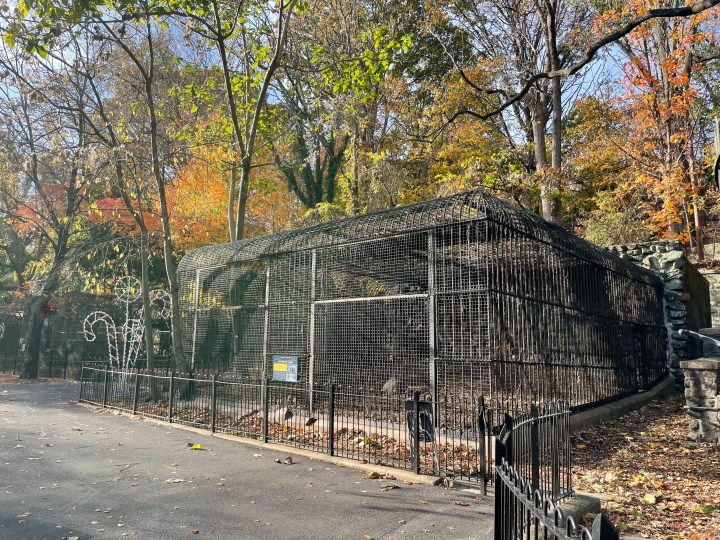
Older zoos face decisions around cages built for different times
Older zoos face decisions around cages built for different times

When visitors first enter the Maryland Zoo in Baltimore, they pass Victorian-era wrought-iron cages. Signs, with black and white photos, show animals that used to live there, including bears, hippos, and hyenas. Linda Hanna, a 67-year-old visitor, remembers seeing them as a child.
“I felt like they paced a lot. You just felt sorry for them,” said Hanna.
People have kept animals in captivity for millenia and here in the U.S., many urban zoos date back to the late 19th or early 20th century. Back then, people’s ideas of how to care for animals were quite different and zoos in the present-day are spending millions updating sections made for a very different time.

“We are the third oldest zoo in the country, and we have evolved quite a bit over the past almost 150 years,” said Kirby Fowler, President and CEO of the Maryland Zoo. He was behind the decision to reopen this older section to the public in 2021.
“For people to walk past these cages and understand that these are not good habitats for animals, that’s an important lesson to send to people,” said Fowler.
The zoo is planning to keep three of the cages, and is raising millions of dollars to build more natural habitats, including one for primates.

Fowler points to the zoo’s otter exhibit as an example of this kind of natural environment. It has a waterfall, rocks, and a glass wall that visitors peer through as the female otter dives for fish. One child trails a stick along the glass, which she seems to follow. Zookeeper Danielle Regan calls for the male otter to join.
“Hudson,” she shouts and seconds later, he comes scampering over the rocks.
“They know their names. They’re highly intelligent and also highly motivated,” said Regan.
This exhibit is a far cry from those cages, which were part of many older zoos.
“They were designed around having a lot of animals in a small space,” said Nigel Rothfels, a historian and author of “Savages and Beasts: The Birth of the Modern Zoo.”
Some zoos have repurposed old buildings, like elephant houses, as event spaces. At the Maryland Zoo, there’s an old mansion on the property, where the zoo will host a Galentine’s brunch for grown ups called “the Flamingle.”
“It’s that whole piece of recognizing, ‘OK, we’re doing more than just exhibiting animals,’ and part of it is diversifying the revenue,” said Rothfels.

It costs at least $40,000 a day to run the Maryland Zoo, according to Maryland CEO and President Kirby Fowler. As a nonprofit, it gets funds from private donations, state support, and admissions.
Plus, some extras. For $5, visitors can feed acacia leaves to a giraffe. Today, there’s a short line waiting with zookeeper James Sodano.
“All right. So, what you guys are going to do is just reach on out. You’re going to give her the entire piece all at once. She’ll take the entire piece with her tongue,” instructs Sodano.
A visitor hands a small acacia branch to the giraffe who takes it without a hitch, raising some money while getting people invested in the animals.
There’s a lot happening in the world. Through it all, Marketplace is here for you.
You rely on Marketplace to break down the world’s events and tell you how it affects you in a fact-based, approachable way. We rely on your financial support to keep making that possible.
Your donation today powers the independent journalism that you rely on. For just $5/month, you can help sustain Marketplace so we can keep reporting on the things that matter to you.

















